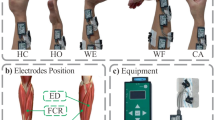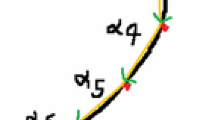Abstract
Hand gestures play an important role in expressing the emotions of people and communicating their intentions. Therefore, various methods have been studied to clearly capture and understand them. Artificial neural networks (ANNs) are widely used for gesture recognition owing to their expressive power and ease of implementation. However, this task remains challenging because it requires abundant data and energy for computation. Recently, low-power neuromorphic devices that use spiking neural networks (SNNs), which can process temporal information and require lower power consumption for computing, have attracted significant research interest. In this study, we present a method for the spike representation of human hand gestures and analyzing them using SNNs. An SNN comprises multiple convolutional layers; when a sequence of spike trains corresponding to a hand gesture is inputted, the spiking neurons in the output layer corresponding to each gesture fire, and the gesture is classified based on its firing frequency. Using a sequence of depth images of hand gestures, a method to generate spike trains from the training image data was investigated. The gestures could be classified by training the SNN using surrogate gradient (SG) learning. Additionally, by converting the depth image data into spike trains, 68% of the training data volume could be reduced without significantly reducing the classification accuracy, compared to the classification accuracy under ANNs.






Similar content being viewed by others
Data Availability
The data that support the findings of this study are not openly available. Data may be available (http://www-rech.telecom-lille.fr/DHGdataset) upon reasonable request.
References
Guna, J., Jakus, G., Pogačnik, M., Tomažič, S., Sodnik, J.: An analysis of the precision and reliability of the leap motion sensor and its suitability for static and dynamic tracking. Sensors 14(2), 3702–3720 (2014)
Zimmermann, C., Brox, T.: Learning to estimate 3d hand pose from single rgb images. In: Proceedings of the IEEE International Conference on Computer Vision. 4903–4911 (2017)
Simon, T., Joo, H., Matthews, I., Sheikh, Y.: Hand keypoint detection in single images using multiview bootstrapping. In: Proceedings of the IEEE Conference on Computer Vision and Pattern Recognition. 1145–1153 (2017)
Molchanov, P., Yang, X., Gupta, S., Kim, K., Tyree, S., Kautz, J.: Online detection and classification of dynamic hand gestures with recurrent 3d convolutional neural network. In: Proceedings of the IEEE Conference on Computer Vision and Pattern Recognition. 4207–4215 (2016)
Liu, Z., Chai, X., Liu, Z., Chen, X.: Continuous gesture recognition with hand-oriented spatiotemporal feature. In: Proceedings of the IEEE International Conference on Computer Vision Workshops. 3056–3064 (2017)
Ma, C., Wang, A., Chen, G., Xu, C.: Hand joints-based gesture recognition for noisy dataset using nested interval unscented kalman filter with lstm network. Vis. Comput. 34(6), 1053–1063 (2018)
Li, Y., He, Z., Ye, X., He, Z., Han, K.: Spatial temporal graph convolutional networks for skeleton-based dynamic hand gesture recognition. EURASIP J. Image Video Process. 78, 1–7 (2019)
Verma, B., Choudhary, A.: Grassmann manifold based dynamic hand gesture recognition using depth data. Multimed. Tools Appl. 79(3), 2213–2237 (2020)
Eshraghian, J.K., Ward, M., Neftci, E., Wang, X., Lenz, G., Dwivedi, G., Bennamoun, M., Jeong, D.S., Lu, W.D.: Training spiking neural networks using lessons from deep learning. arXiv preprint arXiv:2109.12894 (2021)
Levy, W.B., Calvert, V.G.: Computation in the human cerebral cortex uses less than 0.2 watts yet this great expense is optimal when considering communication costs. BioRxiv (2020)
Davies, M., Wild, A., Orchard, G., Sandamirskaya, Y., Guerra, G.A.F., Joshi, P., Plank, P., Risbud, S.R.: Advancing neuromorphic computing with loihi: a survey of results and outlook. Proc. IEEE 109(5), 911–934 (2021)
Amir, A., Taba, B., Berg, D., Melano, T., McKinstry, J., Di Nolfo, C., Nayak, T., Andreopoulos, A., Garreau, G., Mendoza, M., et al.: A low power, fully event-based gesture recognition system. In: Proceedings of the IEEE Conference on Computer Vision and Pattern Recognition. 7243–7252 (2017)
DeWolf, T., Jaworski, P., Eliasmith, C.: Nengo and low-power ai hardware for robust, embedded neurorobotics. Front. Neurorobot. 14, 568359 (2020)
Imam, N., Cleland, T.A.: Rapid online learning and robust recall in a neuromorphic olfactory circuit. Nat. Mach. Intel. 2(3), 181–191 (2020)
The Gartner hype cycle (2022) https://www.gartner.com/en/articles/what-s-new-in-artificial-intelligence-from-the-2022-gartner-hype-cycle. Accessed 18 Nov 2022
Liu, M., Liu, H., Chen, C.: Enhanced skeleton visualization for view invariant human action recognition. Pattern Recogn. 68, 346–362 (2017)
Verma, B., Choudhary, A.: Dynamic hand gesture recognition using convolutional neural network with rgb-d fusion. In: Proceedings of the 11th Indian Conference on Computer Vision, Graphics and Image Processing. 1–8 (2018)
Bhaumik, G., Verma, M., Govil, M.C., Vipparthi, S.K.: Extridenet: an intensive feature extrication deep network for hand gesture recognition. The Visual Computer 1–14 (2021)
Du, Y., Wang, W., Wang, L.: Hierarchical recurrent neural network for skeleton based action recognition. In: Proceedings of the IEEE Conference on Computer Vision and Pattern Recognition. 1110–1118 (2015)
Liu, J., Wang, G., Duan, L.Y., Abdiyeva, K., Kot, A.C.: Skeleton-based human action recognition with global context-aware attention lstm networks. IEEE Trans. Image Process. 27(4), 1586–1599 (2017)
Liu, J., Shahroudy, A., Xu, D., Kot, A.C., Wang, G.: Skeleton-based action recognition using spatio-temporal lstm network with trust gates. IEEE Trans. Pattern Anal. Mach. Intell. 40(12), 3007–3021 (2017)
Nguyen, X.S., Brun, L., Lézoray, O., Bougleux, S.: Learning recurrent high-order statistics for skeleton-based hand gesture recognition. In: 2020 25th International Conference on Pattern Recognition (ICPR), IEEE 975–982 (2021)
Verma, B.: A two stream convolutional neural network with bi-directional gru model to classify dynamic hand gesture. J. Vis. Commun. Image Represent. 87, 103554 (2022)
Yan, S., Xiong, Y., Lin, D.: Spatial temporal graph convolutional networks for skeleton-based action recognition. In: Thirty-Second AAAI Conference on Artificial Intelligence. (2018)
Li, B., Li, X., Zhang, Z., Wu, F.: Spatio-temporal graph routing for skeleton-based action recognition. Proc. AAAI Conf. Artif. Intell. 33, 8561–8568 (2019)
Si, C., Chen, W., Wang, W., Wang, L., Tan, T.: An attention enhanced graph convolutional lstm network for skeleton-based action recognition. In: proceedings of the IEEE/CVF Conference on Computer Vision and Pattern Recognition. 1227–1236 (2019)
Shi, L., Zhang, Y., Cheng, J., Lu, H.: Two-stream adaptive graph convolutional networks for skeleton-based action recognition. In: Proceedings of the IEEE/CVF Conference on Computer Vision and Pattern Recognition. 12026–12035 (2019)
Shi, L., Zhang, Y., Cheng, J., Lu, H.: Skeleton-based action recognition with directed graph neural networks. In: Proceedings of the IEEE/CVF Conference on Computer Vision and Pattern Recognition. 7912–7921 (2019)
Yang, X., Zhang, C., Tian, Y.: Recognizing actions using depth motion maps-based histograms of oriented gradients. In: Proceedings of the 20th ACM International Conference on Multimedia. 1057–1060 (2012)
Oreifej, O., Liu, Z.: Hon4d: histogram of oriented 4d normals for activity recognition from depth sequences. In: Proceedings of the IEEE Conference on Computer Vision and Pattern Recognition. 716–723 (2013)
Verma, B., Choudhary, A.: Framework for dynamic hand gesture recognition using grassmann manifold for intelligent vehicles. IET Intel. Transp. Syst. 12(7), 721–729 (2018)
Kong, Y., Satarboroujeni, B., Fu, Y.: Learning hierarchical 3d kernel descriptors for rgb-d action recognition. Comput. Vis. Image Underst. 144, 14–23 (2016)
Wang, P., Li, W., Liu, S., Zhang, Y., Gao, Z., Ogunbona, P.: Large-scale continuous gesture recognition using convolutional neural networks. In: 2016 23rd International Conference on Pattern Recognition (ICPR), IEEE 13–18 (2016)
Wu, J., Ishwar, P., Konrad, J.: Two-stream cnns for gesture-based verification and identification: Learning user style. In: Proceedings of the IEEE Conference on Computer Vision and Pattern Recognition Workshops. 42–50 (2016)
Jain, R., Karsh, R.K., Barbhuiya, A.A.: Encoded motion image-based dynamic hand gesture recognition. Vis. Comput. 38(6), 1957–1974 (2022)
Diehl, P.U., Cook, M.: Unsupervised learning of digit recognition using spike-timing dependent plasticity. Front. Comput. Neurosci. 9, 99 (2015)
Shrestha, S.B., Orchard, G.: Slayer: Spike layer error reassignment in time. Adv. Neural Inf. Process. Syst. 31, (2018)
Xing, Y., Di Caterina, G., Soraghan, J.: A new spiking convolutional recurrent neural network (scrnn) with applications to event-based hand gesture recognition. Front. Neurosci. 14, 1143 (2020)
Neftci, E.O., Mostafa, H., Zenke, F.: Surrogate gradient learning in spiking neural networks: bringing the power of gradient-based optimization to spiking neural networks. IEEE Signal Process. Mag. 36(6), 51–63 (2019)
Fang, W., Yu, Z., Chen, Y., Masquelier, T., Huang, T., Tian, Y.: Incorporating learnable membrane time constant to enhance learning of spiking neural networks. Proceedings of the IEEE/CVF International Conference on Computer Vision, 2661–2671 (2021)
Kaiser, J., Tieck, V., Hubschneider, C., Wolf, P., Weber, M., Hoff, M., Friedrich, A. Wojtasik, K., Roennau, A., Kohlhaas, R., Dillmann, R., Zöllener, M.:Towards a framework for end-to-end control of a simulated vehicle with spiking neural networks, In: 2016 IEEE International Conference on Simulation, Modeling, and Programming for Autonomous Robots (SIMPAR), 127–134 (2016)
Bi, Y., Andreopoulos, Y.: PIX2NVS: Parameterized conversion of pixel-domain video frames to neuromorphic vision streams, In: 2017 IEEE International Conference on Image Processing (ICIP) 1990–1994 (2017)
Gehrig, D., Gehrig, M., Hidalgo-Carrió, J., Scaramuzza, D.: Video to events: Recycling video datasets for event cameras. In: Proceedings of the IEEE/CVF Conference on Computer Vision and Pattern Recognition 3586–3595 (2020)
De Smedt, Q., Wannous, H., Vandeborre, J.P.: Skeleton-based dynamic hand gesture recognition. In: Proceedings of the IEEE Conference on Computer Vision and Pattern Recognition Workshops. 1–9, (2016)
Shi, X., Chen, Z., Wang, H., Yeung, D.Y., Wong, W.K., Woo, W.C.: Convolutional lstm network: a machine learning approach for precipitation nowcasting. Adv. Neural Inf. Process. Syst. 28, (2015)
Paszke, A., Gross, S., Massa, F., Lerer, A., Bradbury, J., Chanan, G., Killeen, T., Lin, Z., Gimelshein, N., Antiga, L., et al.: Pytorch: an imperative style, high-performance deep learning library. Adv. Neural. Inf. Process. Syst. 32, 8024–8035 (2019)
Bergstra, J., Bardenet, R., Bengio, Y., Kégl, B.: Algorithms for hyper-parameter optimization. Adv. Neural Inf. Process. Syst. 24, (2011)
Akiba, T., Sano, S., Yanase, T., Ohta, T., Koyama, M.: Optuna: A next-generation hyperparameter optimization framework. In: Proceedings of the 25th ACM SIGKDD International Conference on Knowledge discovery and data mining. 2623–2631 (2019)
Funding
This work was supported by Japan Society for the Promotion of Science (JSPS) Grants-in-Aid for Scientific Research Grant Numbers 22K17937.
Ethics declarations
Conflict of interest
The authors declare no competing interests.
Ethical Approval
Not applicable.
Additional information
Publisher's Note
Springer Nature remains neutral with regard to jurisdictional claims in published maps and institutional affiliations.
Rights and permissions
Springer Nature or its licensor (e.g. a society or other partner) holds exclusive rights to this article under a publishing agreement with the author(s) or other rightsholder(s); author self-archiving of the accepted manuscript version of this article is solely governed by the terms of such publishing agreement and applicable law.
About this article
Cite this article
Miki, D., Kamitsuma, K. & Matsunaga, T. Spike representation of depth image sequences and its application to hand gesture recognition with spiking neural network. SIViP 17, 3505–3513 (2023). https://doi.org/10.1007/s11760-023-02574-3
Received:
Revised:
Accepted:
Published:
Issue Date:
DOI: https://doi.org/10.1007/s11760-023-02574-3




